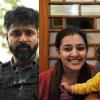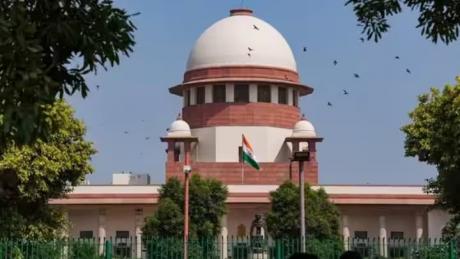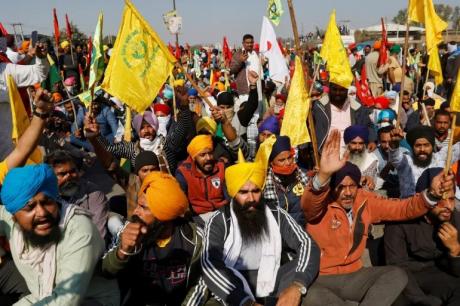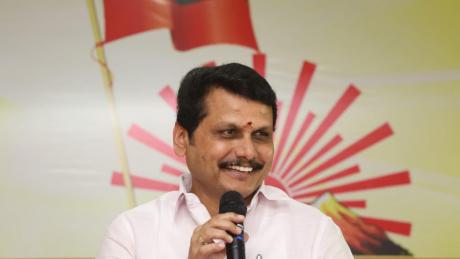Clock is ticking for India's pre-eminent lunar mission as the country's historical trip is going to begin on Friday - July 14. Chandrayaan 3 has become paramount mission for India in its remarkable exploration of the Moon and had the mission triumphed, India will become the first country in the world to successfully land its rover on the unexplored South pole side of the Moon.
Chandrayaan 3 is the latest addition to the series of Chandrayaan missions after Chandrayaan 1 and Chandrayaan 2. The latter was launched in July 2019 and it had flown towards the Moon with an objective of landing on the South pole side. However, despite successfully placing the orbiter, the mission had partially failed after the lander crashed on the Moon's surface. While Chandrayaan 2's orbiter is currently orbiting the moon, it's half-failed mission is being hoped to be achieved by Chandrayaan 3.
Chandrayaan 3 will be launched at 2.35 pm on Friday from the iconic launchpad in Sriharikota, Andhra Pradesh. The countdown for the launch began at 1.05 pm on Thursday - July 13 and is progressing smoothly. An official from the Indian Space Research Organization (ISRO) said that the weather forecast is good for the rocket to fly as scheduled.
"The countdown is progressing smoothly. The 48-hour weather forecast is also good. The rocket systems are being checked. The rocket is expected to fly away as scheduled on Friday at 2.35 pm", the official told IANS. As all eyes are on India's next big lunar mission, let's take a look at ten facts that you should know about the Chandrayaan 3 mission and its objective,
- As India's third moon exploration, Chandrayaan 3 is instilled with new innovations that would propel the lander towards the soft-landing phase on the Moon. With the lessons learned from the partially failed Chandrayaan 2 mission, the Indian space agency has equipped the lander to touch down on the Moon successfully.
- Chandrayaan 3 will feature a Lander Module (LM), a Propulsion Module (PM), and a rover. The LM will facilitate a soft landing, while the PM will handle propulsion and control. The rover's role will be to explore the lunar surface and gather scientific data.
- The lander and rover are specifically designed to function for a single lunar daylight period and this is equivalent to 14 Earth days. Chandrayaan 3's objective will be to explore the lunar surface, conduct scientific experiments, and gather valuable data to pour more light on the Moon's geology and its evolution.
- Only three countries have achieved lunar landings - the United States, China, and the then Soviet Union and India wil be the fourth. While all these countries had landed on the Moon's north side, India will become the first country to make a landing on the Moon's south side, if Chandrayaan 3 mission becomes successful.
- The Chandrayaan 3 spacecraft will be carried by India's heavy lift rocket, the 642 ton Launch Vehicle Mark -III (LVM3). While the first stage of the rocket is powered by solid fuel, the second stage is by liquid fuel, and the third and final stage consists of a cryogenic engine, which will be powered by liquid hydrogen and liquid oxygen.
- In 16 minutes into its flight or at about 2.50 pm, the LVM3 will eject the Chandrayaan 3 spacecraft at an altitude of about 179 km, after which the Chandrayaan 3 craft will commence its journey of 3.84 lakh kilometres to the Moon.
- The LVM3 stands with 43.5 metre height and why India is hopeful that Chandrayaan 3 mission would get an unbattered launch, it is the track record of LVM3 as the rocket has a stupendous record of six consecutive successful missions.
- The biggest difference between the Chandrayaan 2 and Chandrayaan 3 missions is that while Chandrayaan 2 is comprised of an orbiter, Vikram lander, and Pragyan rover, Chandrayaan 3 will be launched with just a lander and a rover. Chandrayaan 3 will be using the orbiter launched by its predecessor for its communications and terrain mapping requirements.
- With additional cameras, the lander in the Chandrayaan 3 mission is built with stronger legs and even it descends on the Moon's surface in an increased velocity, the legs of the lander will neither be crashed nor would be broken. It has also been reported that Chandrayaan 3's lander will touch down on the Moon's surface in a site that is 100 kilometres far from the site where the lander of Chandrayaan 2 got crashed.
- Another addition to the Chandrayaan 3 mission is the Laser Retroreflector Array (LRA), that's being sent with the lander to understand the dynamics of the Moon system. Chandrayaan 3 mission has three objectives - 1) to demonstrate safe and soft landing on Lunar Surface, 2) to demonstrate rover roving on the Moon, 3) to conduct in-situ scientific experiments.
India has already found the presence of water on the Moon through Chandrayaan 1 and now, the country is all set to rewrite history through the crucial discoveries from Chandrayaan 3. South Pole side of the Moon is said to be a tough terrain where no spacecraft has landed so far and when India's mission to land on the south side through Chandrayaan 2 had failed, the time has come to accomplish the mission again.
Becoming the first country to land its rover on the south side of the Moon would reap a great importance to India's space technology and through this mission, India will present to the entire world about what the Moon is hiding for thousands of years. It will take over 40 days for Chandrayaan 3 to reach the Moon as the initial stages of the launch include orbiting the Earth before getting into the lunar transfer trajectory. Chandrayaan 2 was launched on July 22, 2019 and after four years, India is hours ahead to witness the launch of another lunar exploration.
Must-read: All eyes are on India's next big lunar mission: Why Chandrayaan 3 project is paramount?









Comments